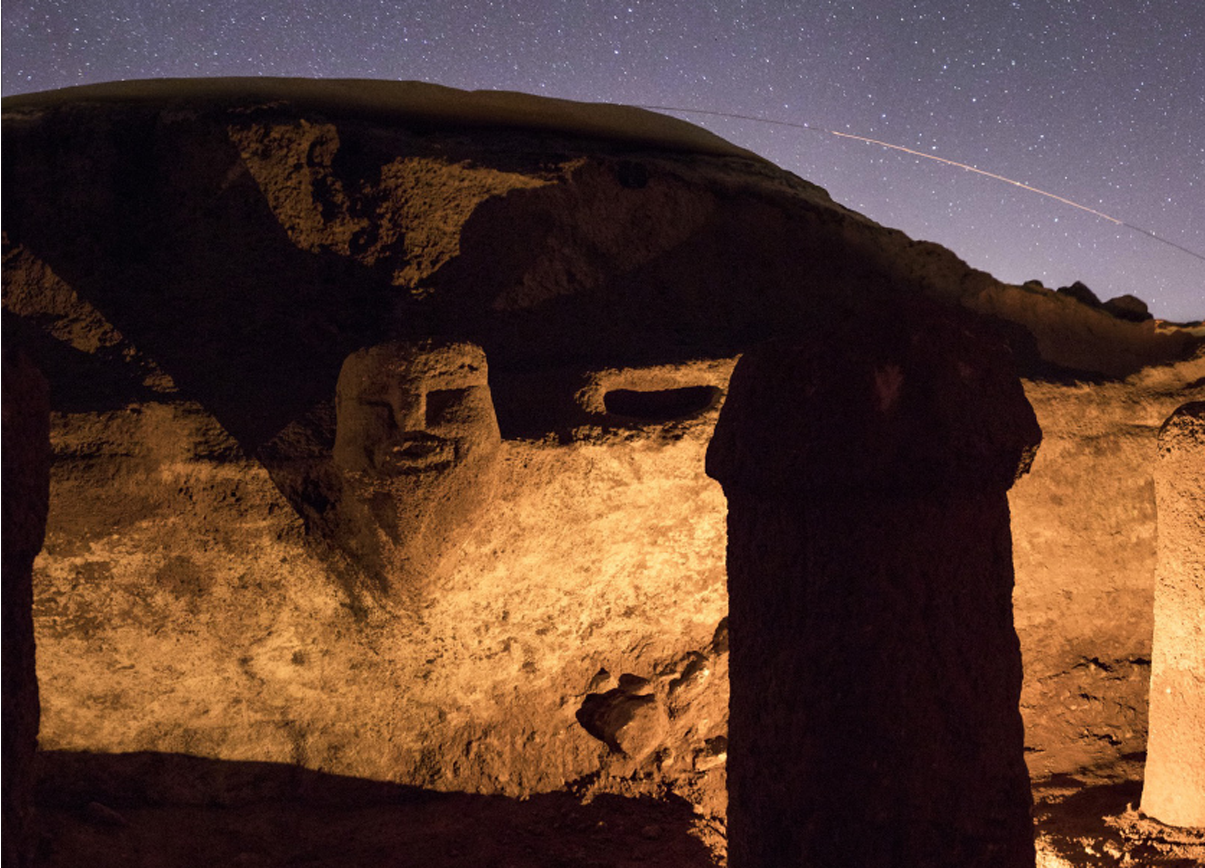It looks like you're using an Ad Blocker.
Please white-list or disable AboveTopSecret.com in your ad-blocking tool.
Thank you.
Some features of ATS will be disabled while you continue to use an ad-blocker.
share:
Culturally related to Gobekli Tepe the nearby related site of Karahan Tepe is currently being excavated and the site holds as much intrigue as the
better known, not least of which is a buried shrine of serpent Gods carved out of the bed-rock.
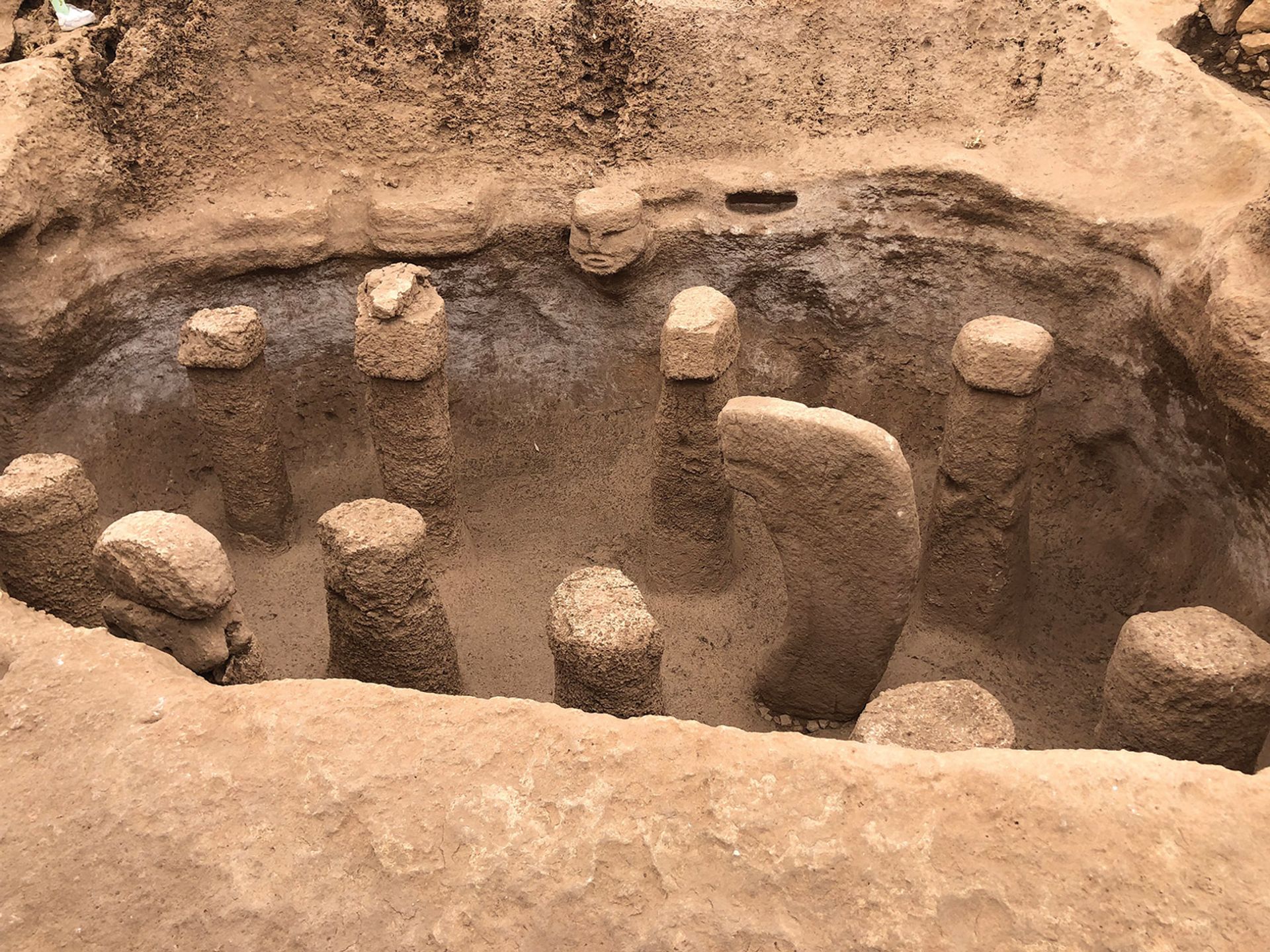
Like Gobekli Tepe these buildings were later filled in.
Buried buildings at Karahan Tepe
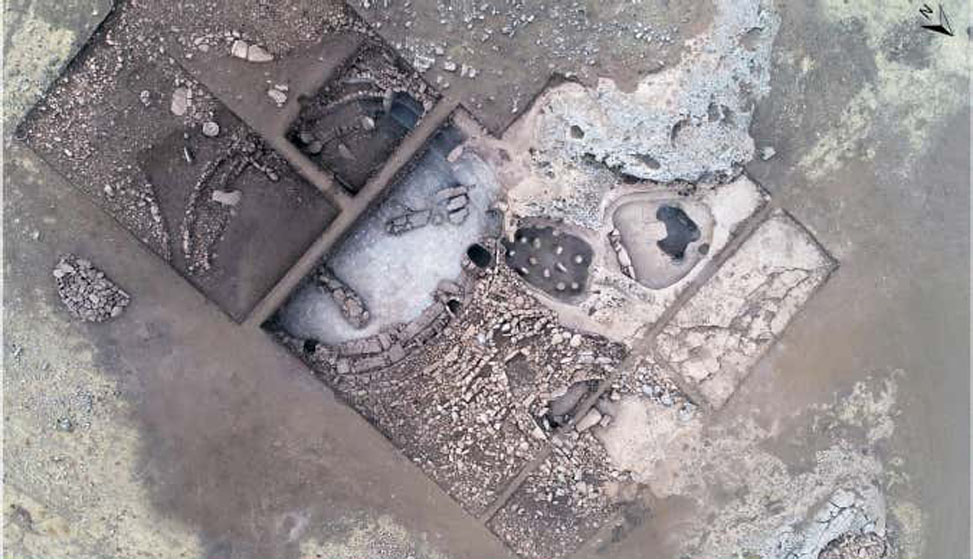
The site is very extensive and thus far only a tiny percentage has been excavated.
Discovery of 11,400 year old village
In other astonishing news Andrew Collins made a video on this and appears to have correclty realized the serpent shrine relates to a Celestial alignment to the constellation Ophiuchus, this then can be correlated to later Sumerian tradition.

Like Gobekli Tepe these buildings were later filled in.
The burial of buildings is somewhat comparable to that of human burials, signifying the strength of the meaningattached to the building. In this respect it is of interest tonote that there are examples of both dwellings and specialbuildings that were buried during the Neolithic period. Examples where the life cycle ends while still preservingtheir functional properties are observed more in specialbuildings.
Buried buildings at Karahan Tepe

The site is very extensive and thus far only a tiny percentage has been excavated.
Karahan Tepe, the first of a dozen prehistoric sites to be excavated by Turkish authorities in the south-eastern province of Sanliurfa near the Syrian border, includes homes within a vast ritualistic complex that demonstrates that hunter-gatherers built permanent settlements long before the advent of agriculture 10,000 years ago.
Karahan Tepe’s circular rooms were planned out in advance, and “the very skilful processing of bedrock reveals an impressive prehistoric architectural engineering”, Karul says. “Building multiple structures with different purposes is the reflection of a complicated belief system. It’s not possible to talk about religion in its true sense, but we see a set of distinct, limited rituals that are radically set forth.”
This is manifested in a chamber that contains what Karul called “one of the most monumental and earliest examples of phallic symbolism”: 11 giant penises carved from the bedrock and watched over by a bearded head with a serpent’s body that emerges from the wall. Karul has deduced that the space, which includes a separate entrance and exit and a channel for water, was used for rites of passage.
Discovery of 11,400 year old village
In other astonishing news Andrew Collins made a video on this and appears to have correclty realized the serpent shrine relates to a Celestial alignment to the constellation Ophiuchus, this then can be correlated to later Sumerian tradition.
Sitting Gods (Most of Ophiuchus) The serpent-bodied men known as the Sitting and Standing Gods represent the ancestors of Enlil, the ultimate leader of the whole Babylonian pantheon. They dwell in the Sacred Mound, which is at once a burial mound and an image of the primeval earth. As such the serpent-bodied gods represent the dual powers of the earth as an abode of the dead and as the source of all earthly fertility.
This place and Gobeckli Tepe could well be the Genesis (No pun intended) of the Eden and expulsion narrative.
Eden was located in Iraq near Babylon between three rivers, Eurphrates, Tigris and another river, currently dried up and cannot be exactly
located.
originally posted by: Granitebones
This place and Gobeckli Tepe could well be the Genesis (No pun intended) of the Eden and expulsion narrative.
edit on 27-12-2021 by
DeathSlayer because: (no reason given)
~ Bump ~
will follow, track this thread...
my interest is any association with the Lithuanian snake cult before they went Christian under the power of the Holy Roman Church ... i have some bloodline with the Shaman when Pagan snake cult dominated the lives/activities of the peoples of Lithuania
will follow, track this thread...
my interest is any association with the Lithuanian snake cult before they went Christian under the power of the Holy Roman Church ... i have some bloodline with the Shaman when Pagan snake cult dominated the lives/activities of the peoples of Lithuania
originally posted by: DeathSlayer
Eden was located in Iraq near Babylon between three rivers, Eurphrates, Tigris and another river, currently dried up and cannot be exactly located.
originally posted by: Granitebones
This place and Gobeckli Tepe could well be the Genesis (No pun intended) of the Eden and expulsion narrative.
I wasnt aware that what you say has been discovered, researched, presented, peer reviewed and accepted.
a reply to: Granitebones
Probably but early accounts of that are in terms of Divinely sanctioned benevolent intervention and that things only went bad because of some woman seducing the Angels involved, similar to blame Eve, that the descendants became over-powered as it were, but mythology aside it's becoming apparent there were very extensive developments in that region.
a reply to: St Udio
I think this discovery would correlate well with say the Hopi legend of the snake ancestors Kiva, it needs to be considered how much elder Gods and snake ancestors related to the Milky Way, but there was an entire class of Mesopotamian snake Gods.
Transtigridian snake Gods
Probably but early accounts of that are in terms of Divinely sanctioned benevolent intervention and that things only went bad because of some woman seducing the Angels involved, similar to blame Eve, that the descendants became over-powered as it were, but mythology aside it's becoming apparent there were very extensive developments in that region.
Previously thought to be a lone destination where nomadic people came to worship, Göbekli Tepe is now considered part of a constellation of contemporaneous settlements that extends over 100km and includes Karahan Tepe and at least 11 other unexcavated sites. Recent work has also revealed domestic structures at Göbekli Tepe. “In this region, we encounter monumental structures for the first time in the oldest villages of the world,” Karul says
Archaeologists have excavated around 1% of the 60,000 sq. m site since 2019, working in record time as remote university instruction during the pandemic extended dig seasons..
a reply to: St Udio
I think this discovery would correlate well with say the Hopi legend of the snake ancestors Kiva, it needs to be considered how much elder Gods and snake ancestors related to the Milky Way, but there was an entire class of Mesopotamian snake Gods.
Transtigridian snake Gods
edit on 27-12-2021 by Madrusa because: (no reason given)
It is in the bible....
Edit: Also Ron Wyatt, a famous archeologists, one of the last to have permission to the Middle East including Saudia Arabia investigated the stories in the bible. He found Noah's Ark, where the Jews crossed the Reed sea where Moses built a stone dedication to God, the rock that Moses struck and it cracked almost in half as water poured out and so much more....like he knows where the convenant arc is buried....in Israel, etc......
Do some research. He has a website, books with photographs....etc.
Edit: Also Ron Wyatt, a famous archeologists, one of the last to have permission to the Middle East including Saudia Arabia investigated the stories in the bible. He found Noah's Ark, where the Jews crossed the Reed sea where Moses built a stone dedication to God, the rock that Moses struck and it cracked almost in half as water poured out and so much more....like he knows where the convenant arc is buried....in Israel, etc......
Do some research. He has a website, books with photographs....etc.
originally posted by: Granitebones
originally posted by: DeathSlayer
Eden was located in Iraq near Babylon between three rivers, Eurphrates, Tigris and another river, currently dried up and cannot be exactly located.
originally posted by: Granitebones
This place and Gobeckli Tepe could well be the Genesis (No pun intended) of the Eden and expulsion narrative.
I wasnt aware that what you say has been discovered, researched, presented, peer reviewed and accepted.
edit on 27-12-2021 by
DeathSlayer because: (no reason given)
edit on 27-12-2021 by DeathSlayer because: (no reason given)
Exciting find.
I do have a problem with this though:
Just by looking at them, especially one in the middle, I see more than just "penis". It certainly looks like a snake head, or some other type of reptile. And several of the others look like they had some carved shape or shapes on them.
I do have a problem with this though:
11 giant penises carved from the bedrock and watched over by a bearded head with a serpent’s body that emerges from the wall.
Just by looking at them, especially one in the middle, I see more than just "penis". It certainly looks like a snake head, or some other type of reptile. And several of the others look like they had some carved shape or shapes on them.
originally posted by: DeathSlayer
It is in the bible....
originally posted by: Granitebones
originally posted by: DeathSlayer
Eden was located in Iraq near Babylon between three rivers, Eurphrates, Tigris and another river, currently dried up and cannot be exactly located.
originally posted by: Granitebones
This place and Gobeckli Tepe could well be the Genesis (No pun intended) of the Eden and expulsion narrative.
I wasnt aware that what you say has been discovered, researched, presented, peer reviewed and accepted.
Well, maybe the biblically assumed location IS wrong -- Karahan is between two of the three rivers, pretty close by:
“Now we have a different view on history,” says Necmi Karul, an associate professor of prehistory at Istanbul University who is leading the dig at Karahan Tepe, a site carved into the slope of a hill on a high limestone plateau between the Tigris and Euphrates rivers.
Today's challenge for the resident geeks: Find remnants of a third river in the vicinity
originally posted by: Nyiah
originally posted by: DeathSlayer
It is in the bible....
originally posted by: Granitebones
originally posted by: DeathSlayer
Eden was located in Iraq near Babylon between three rivers, Eurphrates, Tigris and another river, currently dried up and cannot be exactly located.
originally posted by: Granitebones
This place and Gobeckli Tepe could well be the Genesis (No pun intended) of the Eden and expulsion narrative.
I wasnt aware that what you say has been discovered, researched, presented, peer reviewed and accepted.
Well, maybe the biblically assumed location IS wrong -- Karahan is between two of the three rivers, pretty close by:
“Now we have a different view on history,” says Necmi Karul, an associate professor of prehistory at Istanbul University who is leading the dig at Karahan Tepe, a site carved into the slope of a hill on a high limestone plateau between the Tigris and Euphrates rivers.
Today's challenge for the resident geeks: Find remnants of a third river in the vicinity
Yeah, in fourty days and fourty nights, a storm could blow a ship across the ocean. The location of Eden does not even have to be on that continent.
a reply to: chiefsmom
There are plenty examples of those forms being anthropomorphic but for some reason they always have to say le benis, some of those in the shrine do appear to have faint indications of the buckle and hands around the middle, but they are very worn and pitted stones.
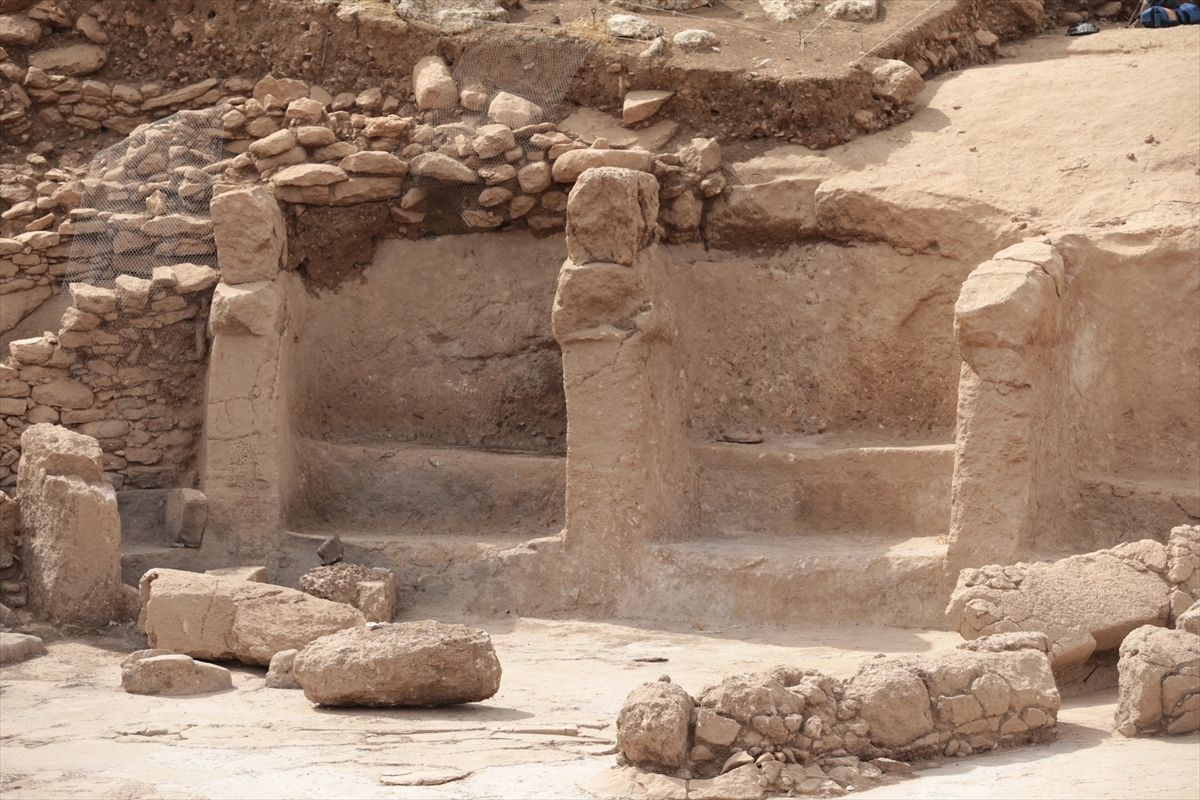
A big difference with Gobekli Tepe is that the buttress stones of the large circle are carved directly from the bedrock.
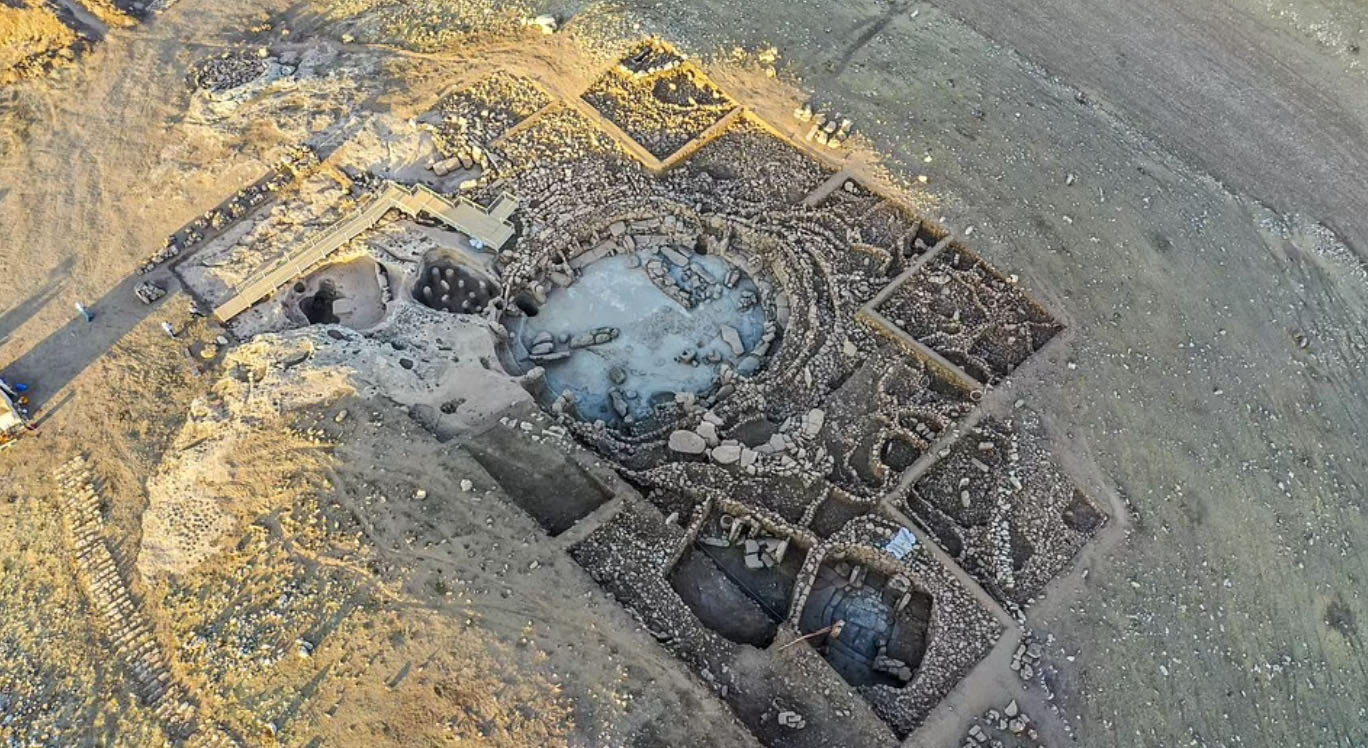

There are plenty examples of those forms being anthropomorphic but for some reason they always have to say le benis, some of those in the shrine do appear to have faint indications of the buckle and hands around the middle, but they are very worn and pitted stones.

A big difference with Gobekli Tepe is that the buttress stones of the large circle are carved directly from the bedrock.


edit on 27-12-2021 by Madrusa because: (no reason given)
a reply to: DeathSlayer
I really don't want to derail this thread.
So have you got any links?
An existing thread here on ATS even?
Also Ron Wyatt, a famous archeologists, one of the last to have permission to the Middle East including Saudia Arabia investigated the stories in the bible. He found Noah's Ark, where the Jews crossed the Reed sea where Moses built a stone dedication to God, the rock that Moses struck and it cracked almost in half as water poured out and so much more....like he knows where the convenant arc is buried....in Israel, etc......
I really don't want to derail this thread.
So have you got any links?
An existing thread here on ATS even?
The location you speak of is in Turkey....a very long distance from the true Eden location in northern Iraq.
originally posted by: Nyiah
originally posted by: DeathSlayer
It is in the bible....
originally posted by: Granitebones
originally posted by: DeathSlayer
Eden was located in Iraq near Babylon between three rivers, Eurphrates, Tigris and another river, currently dried up and cannot be exactly located.
originally posted by: Granitebones
This place and Gobeckli Tepe could well be the Genesis (No pun intended) of the Eden and expulsion narrative.
I wasnt aware that what you say has been discovered, researched, presented, peer reviewed and accepted.
Well, maybe the biblically assumed location IS wrong -- Karahan is between two of the three rivers, pretty close by:
“Now we have a different view on history,” says Necmi Karul, an associate professor of prehistory at Istanbul University who is leading the dig at Karahan Tepe, a site carved into the slope of a hill on a high limestone plateau between the Tigris and Euphrates rivers.
Today's challenge for the resident geeks: Find remnants of a third river in the vicinity
edit on 27-12-2021 by DeathSlayer
because: (no reason given)
edit on 27-12-2021 by DeathSlayer because: (no reason given)
I think construction of such sites could only happen along with crop cultivation and animal domestication just to preserve a labor force large enough.
As for why they buried my thought is the astronomy changed and the gods did as well, thus their burial as past gods. I could see such buildings used
as initiation sites where newly coupled girls could go through to be blessed with fertility or men for their virility. Maybe there we no snakes at
nearby caves recently but no doubt the climate and topography are vastly different than 10 -11,000 years ago. Crops attract rodents, rodents attract
predators; a reason for the veneration possibly. Add the physical similarities to snakes with male organs and the symbolism encapsulates much of their
life cycles, impregnation and successful crops each being essential.
edit on 27-12-2021 by Asktheanimals because: (no reason given)
a reply to: DeathSlayer
The bible is just a mish-mash of earlier Hebrew inversions based on Mesopotamian myth, produced as propaganda to support the cabals death god cult.
Earlier christians were aware of the mythological basis of their beliefs, a view that has become controversial in modern biblical literalists monotheistic blatherings.
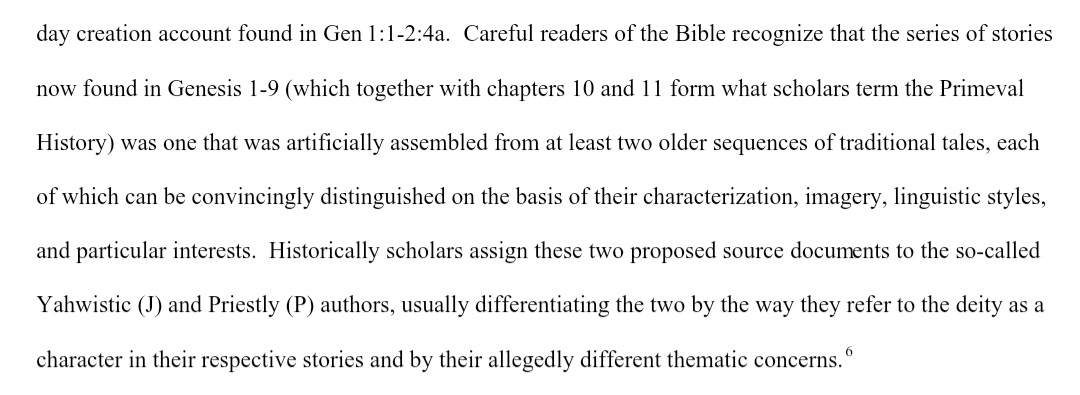
Resurgent Myth
Even the Hebrews who wrote thing, the first 5 chapters being the same as the Torah, often admit it because it's that obvious. Biblical liberals, perhaps the only form of liberal that is better than the conservative, often agree.
This is the earlier basis of the Eden myth, and also probably refers to the serpent mound discovered in the op, which is also where the Tree grows from in the Heavens. Note it's between two rivers not three, likely the Tigris and Eurphates, just like Karahan Tepe.

The Agency of Water, Springs, Rivers and Trees in ancient Mesopotamian Cosmology and Religion (pdf)
The Sumerians connect back to Hattic Anatolia at the end of the last ice age, where the lion lays down with the lamb, oh wait, damn mandela effect 🤯
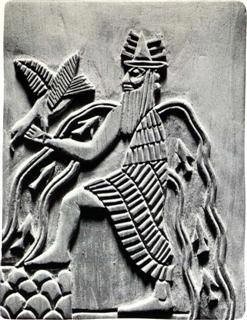
The bible is just a mish-mash of earlier Hebrew inversions based on Mesopotamian myth, produced as propaganda to support the cabals death god cult.
Earlier christians were aware of the mythological basis of their beliefs, a view that has become controversial in modern biblical literalists monotheistic blatherings.

Resurgent Myth
Even the Hebrews who wrote thing, the first 5 chapters being the same as the Torah, often admit it because it's that obvious. Biblical liberals, perhaps the only form of liberal that is better than the conservative, often agree.
www.worldhistory.org...
The notion of a garden as an extraterrestrial place in Sumerian literature was obviously borrowed by the narrator of the book of Genesis for theological and etiological purposes. To understand Genesis' version of the garden, one must take into consideration the place and characters playing roles in the narrative: God, Garden in Eden, Adam, Eve, the Serpent and the two trees (tree of life and tree of knowledge). The narrator of Genesis clearly refined the Dilmun Island to meet its agenda for his/her/their audience.
This is the earlier basis of the Eden myth, and also probably refers to the serpent mound discovered in the op, which is also where the Tree grows from in the Heavens. Note it's between two rivers not three, likely the Tigris and Eurphates, just like Karahan Tepe.

The Agency of Water, Springs, Rivers and Trees in ancient Mesopotamian Cosmology and Religion (pdf)
en.wikipedia.org...(Sumerian_paradise)
Theophilus Pinches suggested in 1908 that Eridu was the Sumerian paradise calling it "not the earthly city of that name, but a city conceived as lying also "within the Abyss", containing a tree of life fed by the Euphrates river. Pinches noted "it was represented as a place to which access was forbidden, for 'no man entered its midst'
William Foxwell Albright noted that "Eridu is employed as a name of the Abzu, just as Kutu (Kutha), the city of Nergal, is a common name of Aralu" highlighting the problems in translation where several places were called the same name
The Sumerians connect back to Hattic Anatolia at the end of the last ice age, where the lion lays down with the lamb, oh wait, damn mandela effect 🤯
etcsl.orinst.ox.ac.uk...
Pure are the cities - and you are the ones to whom they are allotted. Pure is Dilmun land. Pure is Sumer -- and you are the ones to whom it is allotted. Pure is Dilmun land. Pure is Dilmun land. Virginal is Dilmun land. Virginal is Dilmun land. Pristine is Dilmun land.
5-10. He laid her down all alone in Dilmun, and the place where Enki had lain down with his spouse, that place was still virginal, that place was still pristine. He laid her down all alone in Dilmun, and the place where Enki had lain down with Ninsikila, that place was virginal, that place was pristine.
11-16. In Dilmun the raven was not yet cawing, the partridge not cackling. The lion did not slay, the wolf was not carrying off lambs, the dog had not been taught to make kids curl up, the pig had not learned that grain was to be eaten.

edit on 28-12-2021 by primalfractal because: (no reason given)
a reply to: primalfractal
This is true, the dating of the Eden story only goes back to around 6,000 years and the age of Dilmun and the establishment of the cult of Enki in Southern Mesopotamia but the stories of the descent of the watchers relate to Anatolian tradition much earlier, but they were only concerned with these events in order to determine their own reactionary position, other cultures never had such and just accepted it was Divinely sanctioned sages.
It does seem that most only have an interest in these historic developments in order to justify the Bible having some basis in reality which in a garbled mythological and legendary sense it obviously does, but that doesn't make it right in terms of greater justification of their reactionary position, rather as the basis for the development of civilization these historic sites prove their position utterly retarded and hypocritical, as in they have exploited the benefits of civilization more than the rest of humanity combined.
The small minded position is pointless but popular.
This is true, the dating of the Eden story only goes back to around 6,000 years and the age of Dilmun and the establishment of the cult of Enki in Southern Mesopotamia but the stories of the descent of the watchers relate to Anatolian tradition much earlier, but they were only concerned with these events in order to determine their own reactionary position, other cultures never had such and just accepted it was Divinely sanctioned sages.
It does seem that most only have an interest in these historic developments in order to justify the Bible having some basis in reality which in a garbled mythological and legendary sense it obviously does, but that doesn't make it right in terms of greater justification of their reactionary position, rather as the basis for the development of civilization these historic sites prove their position utterly retarded and hypocritical, as in they have exploited the benefits of civilization more than the rest of humanity combined.
The small minded position is pointless but popular.
Someone was there on the Winter solstice to see the Sun shine through the porthole into the Serpent shrine, which is nice.
a reply to: Madrusa
Pretty stunning discovery Karahan Tepe, shows how advanced this civilisation was when the "official" narrative posits Mesopotamia, it's convincingly the basis of various human establishment myths ie. watchers, nephilim, and the earlier Sumerian apkallu, anunnaki.
The temple itself the Earthly place of the Tree.
Klaus Schimdt was the famous
archaeologist who started excavation at the nearby and related Gobekli Tepe -
A restablishment of an antideluvian culture recreated after the flood imo, the myths themselves are probably about both.
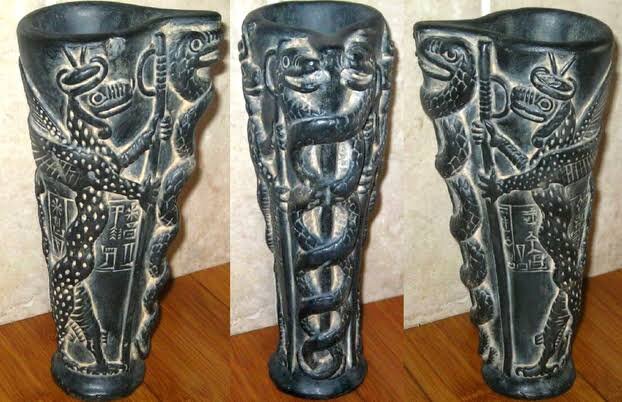
The Holy Mountain/Tree of Knowledge with the silver and gold soul/snake portals. Would guess the third enclosure at Kaharan Tepe, the pit likely filled with water if it ever rained, was the apsu/water/underworld.
From Andrew Collins, the guy featured in the doco from the op.
Some of his interpretations seem good, except for some Sethian distortions and the neadrathol basis for physiological differences, there is a small part neadrathol in all Caucasians, reckon it was 👽 haha. The fact that humans have only 46 chromosomes as compared to the 48 chromosomes of every other primate species, and the Rh- hybrid blood, could rationally point towards genetic engineering.
Who Built Göbekli Tepe (pdf)
The goblins do need a burning...
Pretty stunning discovery Karahan Tepe, shows how advanced this civilisation was when the "official" narrative posits Mesopotamia, it's convincingly the basis of various human establishment myths ie. watchers, nephilim, and the earlier Sumerian apkallu, anunnaki.
The temple itself the Earthly place of the Tree.
Klaus Schimdt was the famous
archaeologist who started excavation at the nearby and related Gobekli Tepe -
www.goodreads.com...
Can these arguments be connected, is it possible that behind Göbekli Tepe there hides Mount Du-ku, and are the anthropomorphous pillars of Göbekli Tepe—suddenly surprisingly real—the ancient Anuna Gods?
A restablishment of an antideluvian culture recreated after the flood imo, the myths themselves are probably about both.
Mušmaḫḫū, inscribed in Sumerian as MUŠ.MAḪ, Akkadian as muš-ma-ḫu, meaning "Exalted/distinguished Serpent", was an ancient Mesopotamian mythological hybrid of serpent, lion and bird, sometimes identified with the seven-headed serpent slain by Ninurta in the mythology of the Sumerian period. He is one of the three horned snakes, with his companions, Bašmu and Ušumgallu, with whom he may have shared a common mythological origin

The Holy Mountain/Tree of Knowledge with the silver and gold soul/snake portals. Would guess the third enclosure at Kaharan Tepe, the pit likely filled with water if it ever rained, was the apsu/water/underworld.
The holy Tigris, the holy Euphrates, The holy scepter of Enlil Establish Kharsag; They give abundance. His scepter protects (?); [to] its lord, a prayer . . . the sprouts of the land.
From Andrew Collins, the guy featured in the doco from the op.
books.google.com...
Among the Anunnaki named in the Nippur foundation cylinder is the great lord Enlil, along with Enki, whom we have already met; Utu, or Ugmash, the sun god; Anu, whose name means “heaven”; and Enlil’s (usually Enki’s) consort, Ninkharsag, a name that translates as “Lady of the Sacred Mountain.” Significantly, she appears also under the Akkadian name Šir (the equivalent of the Sumerian Muš, pronounced mush),25 meaning “Serpent,” and is given the epithet Bê-lit, meaning “Divine Lady.”26 Even though Mesopotamian scholar George A. Barton assumed that Šir was a “serpent goddess” venerated in the city of Nippur,27 O’Brien interpreted her name as meaning “Serpent Lady”28 and identified her as one of the Anunnaki living in Kharsag.
Some of his interpretations seem good, except for some Sethian distortions and the neadrathol basis for physiological differences, there is a small part neadrathol in all Caucasians, reckon it was 👽 haha. The fact that humans have only 46 chromosomes as compared to the 48 chromosomes of every other primate species, and the Rh- hybrid blood, could rationally point towards genetic engineering.
Who Built Göbekli Tepe (pdf)
This story suggests that Mush derives its name from the Sumerian Muš, the Akkadian Šir (pronounced shir), both meaning “snake” (even though in Armenian popular tradition Mush, as the word mshush, means “fog,” a name deriving from a story in which the Armenian goddess Anahita raised a mist so that her daughter Astghik, goddess of love and beauty, could bathe without any mortal setting eyes on her nakedness). If so, then the ancient snake cult known to have existed at Ashtishat (the principal seat of the goddess Astghik, whose symbol was the vishap, a word meaning “snake” or “dragon”)
The goblins do need a burning...
edit on 29-12-2021 by primalfractal because: (no reason given)
new topics
-
South Korea declares martial law for first time in 50 years over North Korea threat
Other Current Events: 1 hours ago -
Alien warfare predicted for December 3 2024
Aliens and UFOs: 5 hours ago
top topics
-
Alien warfare predicted for December 3 2024
Aliens and UFOs: 5 hours ago, 11 flags -
Could Biden pardon every illegal alien
Social Issues and Civil Unrest: 15 hours ago, 8 flags -
Statements of Intent from Incoming Trump Administration Members - 2025 to 2029.
2024 Elections: 14 hours ago, 8 flags -
Stop the Presses! Turkey Soup.
Food and Cooking: 16 hours ago, 5 flags -
South Korea declares martial law for first time in 50 years over North Korea threat
Other Current Events: 1 hours ago, 5 flags
active topics
-
South Korea declares martial law for first time in 50 years over North Korea threat
Other Current Events • 17 • : onestonemonkey -
President-Elect DONALD TRUMP's 2nd-Term Administration Takes Shape.
Political Ideology • 272 • : WeMustCare -
Statements of Intent from Incoming Trump Administration Members - 2025 to 2029.
2024 Elections • 15 • : WeMustCare -
Alien warfare predicted for December 3 2024
Aliens and UFOs • 26 • : WeMustCare -
The Acronym Game .. Pt.4
General Chit Chat • 998 • : tinkerbell99 -
-@TH3WH17ERABB17- -Q- ---TIME TO SHOW THE WORLD--- -Part- --44--
Dissecting Disinformation • 3463 • : duncanagain -
Biden pardons his son Hunter despite previous pledges not to
Mainstream News • 125 • : xuenchen -
Australia passes social media ban for children under 16
Social Issues and Civil Unrest • 28 • : PorkChop96 -
Post A Funny (T&C Friendly) Pic Part IV: The LOL awakens!
General Chit Chat • 7865 • : underpass61 -
Could Biden pardon every illegal alien
Social Issues and Civil Unrest • 22 • : mysterioustranger

